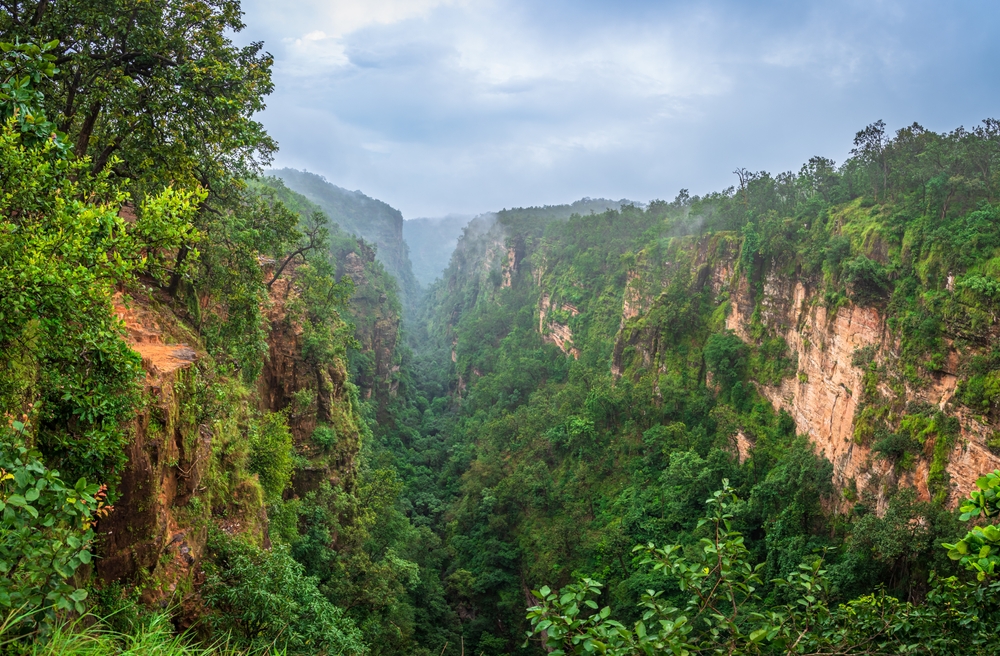Satpura Overview
Satpura National Park, known locally as सतपुड़ा राष्ट्रीय उद्यान (Satpura Rashtriya Udyan), is a stunning expanse of wilderness in the Indian state of Madhya Pradesh. Spanning an area of approximately 524 square miles (1,358 square kilometers), it is part of the larger Satpura Tiger Reserve, which together with nearby protected areas, forms a crucial habitat for Central India’s diverse wildlife. The park is named after the Satpura range, a chain of hills that traverses this region and is characterized by rugged terrain, sandstone peaks, deep gorges, and dense forests. Among its many scenic highlights are the Denwa River, which flows along its boundary, and the Pachmarhi Plateau, a UNESCO Biosphere Reserve that offers a panoramic view of the area.
The landscapes of Satpura National Park are as varied as they are breathtaking. Visitors will encounter a mix of sal forests, teak woodlands, bamboo groves, and grasslands, with patches of scrubland adding to the diversity. The rugged cliffs and steep escarpments create dramatic vistas, while the tranquil water bodies such as Tawa Reservoir and several smaller streams provide serene retreats for wildlife and visitors alike. Seasonal waterfalls like the Duchess Falls add to the park’s charm, especially during the monsoon, when the greenery becomes more vibrant.
The wildlife of Satpura National Park is one of its most defining features. It is a haven for a wide variety of mammals, including the elusive Bengal tiger, Indian leopard, sloth bear, and the rare Indian giant squirrel. Herbivores such as gaur, sambar deer, and chital are commonly spotted, grazing in open grasslands or along the forest fringes. Bird enthusiasts will be thrilled by the over 300 bird species recorded here, ranging from the Indian paradise flycatcher to the Malabar pied hornbill. Raptors such as crested serpent eagles and shikras add to the avian diversity, making the park a birdwatcher’s paradise.
Satpura is well-known for its eco-tourism model, which emphasizes sustainable interaction with its pristine environment. Jeep safaris and walking safaris offer visitors a closer look at its flora and fauna, with the latter being a rare and unique feature in Indian national parks. Boat safaris on the Denwa River provide an alternative perspective of the park’s landscape and wildlife. Pachmarhi, the nearby hill station, serves as a gateway to the park and boasts charming colonial architecture and natural attractions like caves and waterfalls.
Despite its natural splendor, Satpura faces challenges in conservation. Habitat fragmentation, human-wildlife conflict, and poaching are persistent threats, though the park’s management has seen notable successes. Anti-poaching measures and community engagement initiatives have significantly bolstered wildlife populations. Efforts to involve local communities in conservation through eco-tourism and employment have been pivotal in fostering a harmonious coexistence.










































































